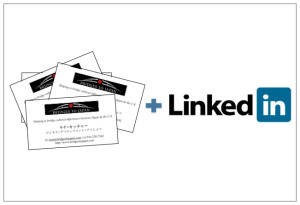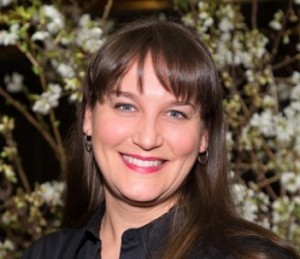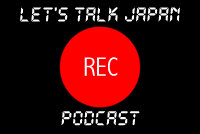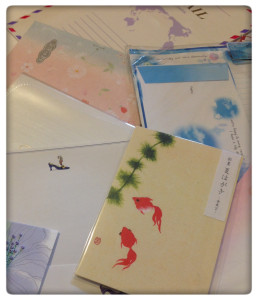Life After JET: Gabai Life!-Educational Journeys of an Ex-JET from Saga
By Jose Ariel Ramos (Saga-ken, 1998-2001). Jose recently moved to Central Texas where he now works as a recruiter for a charter school.
Gabai Life!-Educational Journeys of an Ex-JET from Saga
“To know what you prefer instead of humbly saying Amen to what the world tells you you ought to prefer, is to have kept your soul alive.”
-Robert Louis Stevenson
I reach for my phone. I want to check my email. I’m pretty sure there is something important there-a job lead, a response from a recruiter, a rejection, an actual offer. I put it back on the table. I go back to re-writing my resume and looking on JETwit, on Idealist, on Linkedin, on many other websites where jobs are posted. Again. Again. Again. Maybe this time I’d get a yes.
This has been my life for the past eight months: re-writing my resume; re-arranging the cover letter; sending all required documents in; filling in another online form at another job application site. I’ve applied to teaching positions in Japan, Oman, Korea, Singapore, China. I’ve applied to be director for different university overseas programs. I’ve applied to grad school. I’ve probably applied for no less than two hundred or so jobs-I’d lost count a while ago. I’ve gotten about six interviews but no luck. “How did I get here?” I’d find myself asking.
I got on JET right after graduating university with a Music and French degree in 1998. With an open mind and plenty of optimism I went to Saga ken as an ALT to find out what Japan was like. At that time cellphones were just starting to be widely used, dial-up was the common way to connect on the net, and we were still making long distance telephone calls on landlines. Saga was a rural place that had it’s own unmistakable dialect-“Gabai oishika!” I would find myself saying after a meal (Really delicious!). I made plenty of mistakes but made plenty of friends, and I had incredible experiences. The first times I went snowboarding, white-water rafting, even bungee jumping were in Japan. Three years of adventure with other adventurous people. I decided back then that that was the kind of life I wanted to live-a life of voyage, excitement, freedom.
I came back home in 2001 right before 9/11, Read More
Life After JET: Buyer Beware
Posted by blogger and podcaster Jon Dao (Toyama-ken, 2009-12).

When you witness someone in their element, it’s mesmerizing. They have this sort of flow to how they move and deal with other people, projects, and even problems. No way are they flawless, but hey, that term’s reserved for one environment only—and it ain’t the career world.
For a lot of us, we get an extra kick finding out that that successful dude? They did the JET Program! But for every JET alum who’s found their niche, there’s plenty who’ve taken awhile to find their footing. Read More
Let’s Talk Japan, Episode 22 – A Conversation with Dave Carlson, host of the Japanofiles Podcast
Let’s Talk Japan is a monthly, interview format podcast covering a wide range of Japan-related topics. Host Nick Harling (Mie-ken, 2001-03) lived in Japan from 2001 until 2005, including two great years as a JET Program participant in Mie-Ken. He practices law in Washington, D.C., and lives with his wife who patiently listens to him talk about Japan . . . a lot.
 In this episode, I speak with Dave Carlson, a longtime resident of Japan and host of the popular Japanofiles Podcast. Originally from Michigan, Dave first came to Japan in 1983. Since then, he has resided in Japan on and off for 21 of the last 30 years. Together, we discuss Dave’s life in Japan, his podcast, and how to have a positive experience living in Japan.
In this episode, I speak with Dave Carlson, a longtime resident of Japan and host of the popular Japanofiles Podcast. Originally from Michigan, Dave first came to Japan in 1983. Since then, he has resided in Japan on and off for 21 of the last 30 years. Together, we discuss Dave’s life in Japan, his podcast, and how to have a positive experience living in Japan.
If you’ve never listened to the Japanofiles Podcast, I highly recommend it.
Nick
If you have not already done so, be sure to “Like” the podcast on Facebook, and follow the podcast on Twitter @letstalkjapan. Additionally, please consider leaving a positive rating and/or review in iTunes.
JQ Magazine: From JET to Japan-Related Jobs – New York Edition
By Brett Rawson (Akita-ken, 2007-09) for JQ magazine. Brett is a writer, translator, and volunteer. He currently lives in New York, where he is pursuing an MFA in creative writing at The New School and is the professional development chair for the JET Alumni Association of New York. If you have job opportunities for JET alums, an interest in presenting at JETAANY’s annual Career Forum, or want to collaborate on professional endeavors, contact him at career@jetaany.org.
If you listen closely, the age-old JET adage every situation is different can be heard echoing around the world. This is because it’s said so frequently, but that’s because there is truth to the takeaway: Paths to JET, experiences in Japan, and adventures thereafter run in every direction. But when the stories sit side by side, a greater context for, character of and meaning to the program and participants, takes solid shape.
Below are features on three New York City-based JET alumnae. Each carved a unique path to, on, and from the program, but they share one incredible thing in common: they are working at three of the largest Japan-related non-profit organizations in the world. For those interested in following in their professional footsteps, JQ would like to introduce to you them and share their advice about entering the world of Japan-related non-profits.
Meet Christy Jones, Director of Special Events at Japan Society
ALT, Shimabara-shi, Nagasaki-ken, 1995-98
Born and raised in Upstate New York, Christy received a degree in cultural anthropology and a certificate in Asian and African Languages and Literature from Duke University. That was the closest she could get to a degree in Japanese, but it wasn’t the closest she got to Japan: Her junior year, she studied abroad at Kansai Gaidai University in Osaka. But that stint didn’t quite quench her thirst for the cuisine and culture. The following fall, she applied to JET, got accepted, and returned to Japan—but this time for three years.
Christy served as an ALT at an academic high school in Shimabara-shi in Nagasaki. Thinking back, she has very fond memories of her time on JET: “As this was the pre-Internet era, I didn’t know much about Nagasaki beyond the atomic bomb,” she says. “I came to appreciate the rich international history of the area, along with the stunning natural beauty. Some of my happiest moments were traveling around Kyushu, visiting fellow JETs in their own towns, checking out the local onsens, cafes, and izakayas, and taking thousands of photos. I was befriended by a number of local residents, which allowed me to have some uniquely Japanese experiences: delivering mail as an honorary ‘Postlady for a Day’; making yakimono in a backyard pottery studio and kiln; watching a bonfire-lit Noh performance at the base of a castle; and marching in the city’s annual parade dressed like a Portuguese missionary.”
When Christy returned home, she let her experience settle. “Eventually,” she recalls, “I visited NYC to attend JETAANY’s annual Career Forum, which happened to be held at Japan Society that year.” She connected with a couple of headhunters and landed a job working as an administrative assistant for a subsidiary of Sumitomo Chemical for two years, but the work itself didn’t fulfill her: “My workday ended at 5:30 sharp, so I started volunteering at the nearby Japan Society events as an usher and ticket-taker,” which is when everything began to change.
Posted by Benjamin Martin, a JET from 2008-2013 in Okinawa, publisher of the blog MoreThingsJapanese.com and author of Revenge of the Akuma Clan
(Tuttle).
This post is an excerpt from the original on my blog, here to help anyone in Japan who might be considering settling down. Like most people, I had no idea what I was getting into but figured the process might not be quite as straight forward as going to a local court and signing some papers… I don’t think Kume Island even has a court…
I did what most would do and googled it. The American Embassy site explains the process quite clearly for US citizens. I’m sure most other countries have similar information available for their expats. It gives all the basic information, and I went to my local town hall to confirm. Since I live in such a small community it was rather easy and quick to get everything I need, but unlike large cities the offices are not open 24/7.
The first step for Americans is filling out the Affidavit of Competency to Marry and having it translated (or translate it yourself). On a side note, the legal marriage is called nyuseki (入籍) in Japan. For me this was easy as I followed the example provided on the site above. One thing to watch out for is the part where you write your passport number and issuing local. For me it turned out to be the Department of State and not a city so I had to rewrite the form at the last-minute.
To get the forms notarized you have to make an appointment with the embassy, which are limited and cost $50. It was a pain (though the staff were very nice) and I had to make a special trip into the mainland to do it. With the added security you’ll want to give yourself plenty of time. You can’t even get to the gate without your appointment slip so don’t forget it. With the form in hand your work is done as far as preparations go.
Getting Married
 All you should need at the town (city) hall is your passport and the competency form (notarized English and Japanese translation). Then you can fill out the form and have your partner do the same. If your partner is Japanese they’ll need their own forms (such as family register) which they can get at their own local town or city hall. You’ll also want to decide if your partner will be changing their honseki (permanent residence) at that time or at a later date. For foreigners you just write your nationality (in Japanese).
All you should need at the town (city) hall is your passport and the competency form (notarized English and Japanese translation). Then you can fill out the form and have your partner do the same. If your partner is Japanese they’ll need their own forms (such as family register) which they can get at their own local town or city hall. You’ll also want to decide if your partner will be changing their honseki (permanent residence) at that time or at a later date. For foreigners you just write your nationality (in Japanese).
One good piece of advice I received and will pass on here is to go a day before you actually marry to have your forms checked over (you can get them in advance). Since the day you marry is often important in Japan, you can avoid having the date of marriage delayed due to a typo and re-entered form. As a foreigner, I filled in my name in Katakana and the rest in Japanese (be careful here, especially if you have a middle name. They originally tried to talk me into writing my middle and family name together, which would mean my wife would have to go by that rather than just Martin!). My significant other filled out the form in Japanese and had to fill out a separate form to take my name. Both forms are straight forward, though there’s a section about household work. For those of us who lived alone, it’s whatever work we were doing. For my partner it was the primary work of her father and mother. It’s something the person in charge can help you answer.
You’ll need two witnesses as well (remind them to bring their seals!). If everything is in order they’ll announce everything is alright and you’ll be legally married. You will also be able to get your notice of marriage certificates sometime after that (I got mine later that day).
All in all it was not a difficult process.. but you’ll see that (or read about it in a later post). It helped that we planned ahead and communicated with the town hall.
One thing to note is that when a Japanese person marries a foreigner they are removed from their family register and become a family of one. Until they have a child they are legally their own family (unless you become a Japanese citizen which does not happen automatically). That’s a big deal in Japan.
Also, if you’re reading this and you happen to be a wedding planner/cake maker/do everything so we don’t have to er/ in Japan willing to donate (cough cough) your services… let me know!
P.S. You might note this post is a bit lacking in any info on what happened around the form signing. Keep an eye on TBS’s Motemote99 TV show in Japan to see what really happened.
*****
Writer, researcher, and JET alumnus Matt Leichter (Saitama-ken ’03-’05) will give an encore performance of his lecture, “College Education: Certain Debt, Uncertain Income.” It will again be hosted by the Henry George School of Social Science in New York City. The event date is Wednesday, January 29, at 6:30 PM. The location is not the school’s normal address; instead it will be at:
NYC Seminar and Conference Center
71 West 23rd Street (corner of 6th Ave.)
New York, NY 10010
Here is the lecture’s abstract:
Soaring costs for education, together with limited job opportunities and stagnant wage growth, place substantial financial and psychological burdens on students.
Noted columnist and researcher Matt Leichter reviews tuition inflation, cuts in public funding and the business of lending to students. Mr. Leichter will also propose reforms to the system of financing college education.
Space is limited; please register to attend by emailing hgs.billy@gmail.com.
Kitcher’s Café #003: Making the Most of Your Network
Kitcher’s Café, a new series by Lana Kitcher (Yamanashi-ken, 2010-12) is an assortment of articles, topics and commentary written for the JET Alumni community. Lana currently serves as the Business Development Associate at Bridges to Japan, a New York-based cross-cultural consulting firm founded by JET alum Jennifer Jakubowski (Hokkaido, 1995-97).
Dear recent JET returnees and current “job hunters,”
 I was given the opportunity to speak at the JETAANY Career Forum in New York City a few weeks ago. Approximately 25 recent returnees (plus JET alumni going through a career transition) attended the event and were able to learn from the presenters, and also from one another, about how to successfully land a job in today’s economy. We learned that it is important to keep strategies current as technology continues to change and as the methods of yesterday are not necessarily effective for our search today.
I was given the opportunity to speak at the JETAANY Career Forum in New York City a few weeks ago. Approximately 25 recent returnees (plus JET alumni going through a career transition) attended the event and were able to learn from the presenters, and also from one another, about how to successfully land a job in today’s economy. We learned that it is important to keep strategies current as technology continues to change and as the methods of yesterday are not necessarily effective for our search today.
I would like to share with you some of the points from my presentation called “Making the Most of Your Network,” in case some of you are also going through this transition now. When I first returned home from the JET Program I had a really difficult time figuring out how to start the job search. At that point my only full-time job had been teaching English in Japan, and I didn’t know how to start looking for a new job from scratch. It took me until mid February to get a job, and I really wish someone had told me what I needed to hear earlier.
*****
Writer, researcher, and ex-JET Matt Leichter (Saitama-ken ’03-’05) will be presenting “College Education: Certain Debt, Uncertain Income” at the Henry George School of Social Science in New York City on Friday, December 20, at 6:30 PM. Here is the abstract:
Soaring costs for education, together with limited job opportunities and stagnant wage growth, place substantial financial and psychological burdens on students.
Noted columnist and researcher Matt Leichter reviews tuition inflation, cuts in public funding and the business of lending to students. Mr. Leichter will also propose reforms to the system of financing college education.
The school is located in Manhattan on East 30th Street between Park Avenue and Lexington Avenue.
Let’s Talk Japan, Episode 17 – Temple University Japan
Let’s Talk Japan is a monthly, interview format podcast covering a wide range of Japan-related topics. Host Nick Harling (Mie-ken, 2001-03) lived in Japan from 2001 until 2005, including two great years as a JET Program participant in Mie-Ken. He practices law in Washington, D.C., and lives with his wife who patiently listens to him talk about Japan . . . a lot.
In this episode, Nick speaks with Bruce Stronach, the dean of Temple University Japan, the oldest and largest foreign university in Japan. Together they discuss the unique undergraduate and graduate opportunities available at Temple’s Tokyo campus as well as recent trends and the future of higher education in Japan.
Nick
If you have not already done so, be sure to “Like” the podcast on Facebook, and follow the podcast on Twitter @letstalkjapan. Additionally, please consider leaving a positive rating and/or review in iTunes.
Kitcher’s Café #002: Staying Connected
Kitcher’s Café, a new series by Lana Kitcher (Yamanashi-ken, 2010-12) is an assortment of articles, topics and commentary written for the JET Alumni community. Lana currently serves as the Business Development Associate at Bridges to Japan, a New York-based cross-cultural consulting firm founded by JET alum Jennifer Jakubowski (Hokkaido, 1995-97).
Although it has been a full year since my return, I continue to enjoy sharing stories and experiences with my friends from and in Japan. Recently, one of my old colleagues from Yamanashi visited New York for the first time and contacted me through facebook to meet up. I took her and her travel partner to “Penelope,” a small restaurant on E 30th and Lexington Ave in New York. I was pleasantly surprised to see facebook photos of them going there for breakfast every day thereafter for the duration of their trip. It was a great and satisfying feeling to make these arrangements with her and be able to see the results.
As you are settling into a familiar state, maybe even feeling like your time in Japan was actually all a dream – you may wonder how it might be possible to keep up with your friends and colleagues that you met while in Japan. Thanks to social media, staying in touch has never been easier.
Kitcher’s Café, a new series by Lana Kitcher (Yamanashi-ken, 2010-12) is an assortment of articles, topics and commentary written for the JET Alumni community. Lana currently serves as the Business Development Associate at Bridges to Japan, a New York-based cross-cultural consulting firm founded by JET alum Jennifer Jakubowski (Hokkaido, 1995-97).
As I sat in my empty Yamanashi apartment, one year ago this month, a flood of feelings rushed over me. I had come full-circle, able to cram everything into two suitcases again with anxious yet excited feelings of leaving home for something unfamiliar. I had a bundle of memorabilia set aside to take with me, and pictures of the last days that I had with my students, coworkers and friends. I knew it was going to be hard to say goodbye and turn the page to the next exciting chapter of my life, but I didn’t think that it was going to feel so daunting. This was the first time in my life that the next steps were utterly unplanned and unpredictable. After high school I knew I was going to college, during college I knew I wanted to work for the JET Program… but now that the JET Program was over, the next year was a completely blank slate. I was going to have to return to my hometown temporarily to figure it out, and that idea to me was terrifying.
Many of the JETs that are in Japan right now are clearing out their desks, packing up their apartments, attending farewell parties, and being brought to tears by the students and coworkers that shared many moments with them this past year (or five). Where once was an unfamiliar, foreign and strange place, has become normal life. Do they realize that many of them are about to leave Japan, bound for an even stranger land – the one that they once called home?
As many of us have experienced, returning to your home country after any amount of time living abroad is more challenging than it may seem at first. They try to warn us about reverse culture shock, but we convince ourselves that “I will be different,” and “It won’t happen to me, I already know what to expect.” Some people really don’t experience any strange or frustrating feelings when returning home, but for individuals like myself, the first year back may be a challenging and rocky road.
As JET alumni, what do you wish someone had told you during your final days in Japan? What are some of the words of wisdom that you wish you had known before coming back? How can we help these transitioning JET participants, soon to join the alumni community? My advice to them would be this: Read More
Posted by Ashley Thompson (Shizuoka-ken, 2008-10), Community Manager for Nihongo Master and editor of Surviving in Japan.
Japan is home–the place I got engaged, married, and gave birth to my daughter. It’s the birthplace of my husband. I never expected Japan to become so special to me six years ago, let alone that the most important events of my life would happen there. It isn’t a perfect county–no country is–but I love many of its quirks, traits and customs.
We didn’t know what the future held and we had set up a life there.
A sudden turn of events and circumstances forced us to move back to the US in January of this year. We made the decision to move only two months before, as financially and emotionally we weren’t in a place to stay.
I’ve been struggling with reverse culture shock since coming back. I’m not sure I’ve ever felt like I “fit in” here in the States, but I feel it even less so now. I’m trying to adjust while pining for Japan, despite the fact we had plenty of reasons to move back. Read More
(New Posts) JET Alum Parenting Blog: “US-JAPAN FAM”
 Heather Wilson Tomoyasu (ALT Ibaraki-ken, 2004-06), previously Manager of Public Relations at the Japanese Chamber of Commerce, is now a newly established stay-at-home mom blogging in Brooklyn on her site US-Japan Fam to hopefully compile the ultimate resource for Japanese-American cross cultural families, delving into the matters of raising children bilingually, bi-culturally, and bi-racially in the Big Apple.
Heather Wilson Tomoyasu (ALT Ibaraki-ken, 2004-06), previously Manager of Public Relations at the Japanese Chamber of Commerce, is now a newly established stay-at-home mom blogging in Brooklyn on her site US-Japan Fam to hopefully compile the ultimate resource for Japanese-American cross cultural families, delving into the matters of raising children bilingually, bi-culturally, and bi-racially in the Big Apple.
 Dreamy Destination Wedding: Three years ago I today we tied the knot, got hitched, jumped the broom, or whatever you like to call it! I walked down the virgin road (that’s what they call the aisle in Japan!! HA!!) in Hawaii of all places!! I’d never been there before, but it seemed like the perfect romantic and beautiful halfway meeting ground for our family and friends to join from America and Japan (as well as from Canada, Australia, and England)… <CONTINUE>
Dreamy Destination Wedding: Three years ago I today we tied the knot, got hitched, jumped the broom, or whatever you like to call it! I walked down the virgin road (that’s what they call the aisle in Japan!! HA!!) in Hawaii of all places!! I’d never been there before, but it seemed like the perfect romantic and beautiful halfway meeting ground for our family and friends to join from America and Japan (as well as from Canada, Australia, and England)… <CONTINUE>
Victor-Victoria, or more like Rick-Riku?: Little Kenzo was born with 100% Japanese eyes. No crease or double eyelid or whatever you call it. They were just like daddy’s and gorgeous! Fast forward 2 months and overnight he developed the double lid… in ONE EYE… <CONTINUE>
Go to the blog to see more posts!!
Comments on entries are always appreciated, and guest bloggers are welcome to use the contact form on the blog site to submit ideas!
JETwit note: CLICK HERE to join the JET Alumni Parents group on Facebook.
Posted by Ashley Thompson (Shizuoka-ken, 2008-2010) of Surviving in Japan: without much Japanese and Lifelines columnist for The Japan Times.
Cherry blossoms are blooming, depending on where you are in Japan, and various other types of trees and flowers are starting to show their spring colors. Graduation ceremonies are being held (or have already happened) all over Japan, as one year ends and another is about to begin.
Then there’s the pollen. Hay fever season in Japan has also arrived. And if you have allergies, it might have already hit you hard (or will…). How do you get through allergy season in Japan? You’ll find some ideas below.
A few words to know:
花粉症 かふんしょう kafunshou hay fever
花粉 かふん kafun pollen
アレルギー arerugii allergy
Now, a few ideas to help you survive hay fever season in Japan:
1. Wear a mask outside. Even if you didn’t wear one in your home country, “do as the locals do” or “when in Rome…” or something like that. I personally can’t stand wearing them, but I know some people who now like wearing them.
2. Use a mask spray. Apparently if you spray your mask with this stuff it makes the mask more effective at keeping unwanted particles out.
3. Try a “nose mask” – (pictured below) It’s basically something that you attach to the underside of your nose and each side goes in a nostril. It acts as a filter for pollen and other airborne particles.

4. Refill those allergy medicine prescriptions. It is possible to get Claritin, Allegra, Zyrtec and Flonase (フルナーズ) in Japan – consult a doctor about possibilities. You could also try contacting Japan Healthcare Info if you’re not sure where to look or who to ask. Some possible prescription non-drowsy or “mostly” non-drowsy meds in Japan include: Allegra (アレグラ), Claritin (クラリチン), Alesion (アレジオン), エバステル, Talion (タリオン), and Zyrtec (ジルテック). [Source]
You can get some over-the-counter anti-allergy medication, but most, if not all, are drowsy, and probably not as effective as those you can get by prescription. (Let us know, though, if you’ve found something that works well and isn’t too sleep-inducing). Mmmfruit mentioned Zaditen as an option. David and I have both used Stonarhini (ストナリニ), and while David didn’t get too drowsy, I felt like I had just taken a Benadryl (it knocked me out for hours). It claims to use less of the ingredients that make you drowsy, but it may be best to try it on a day you don’t have to go out and do anything, just to see how your body reacts first. — CLICK HERE to read 11 more ways to defeat hay fever this year.
Surviving in Japan: The Ultimate Guide to Reading Food Labels
Posted by Ashley Thompson (Shizuoka-ken, 2008-2010) of Surviving in Japan: without much Japanese and Lifelines columnist for The Japan Times.

When I first came to Japan, attempting to read food labels and understand what things were and what was IN what I was buying and eating was a huge obstacle. I could read hiragana, katakana and some kanji, but the majority of the food labels were confusing and I spent extensive amounts of time at the supermarket, smartphone in hand with a Japanese-English dictionary open, trying to decipher ingredients and information. I’d also use the smartphone app, ShinKanji, to search for various kanji and words I couldn’t read.
The work paid off, and though now I can’t read every single Japanese word without consulting a J-E dictionary or looking up certain kanji, I can usually quickly scan most labels to find what I want to know.
A guide to reading food labels in Japan is also one of the most popular post topic requests I’ve received. It’s something most of us struggle with when we first arrive, and I’d imagine even some of those who are fluent may not have known every word or kanji at first. Deciphering Japanese food labels, the entirety of them anyway, isn’t particularly easy, but I’ve attempted to break them down for you here. Note that I have not covered various ingredients aside from common allergens, as that’s something to cover in a separate post (or more than one). This one is already long!
I should note that food labels in Japan aren’t always consistent, as you’ll see below, and although, for example, you’ll usually see information about the total calories, protein, fat, carbohydrates and similar main nutrients, you won’t always see much about other minerals or vitamins (though things like fortified cereals, breads, etc., often list these).
I’ve also tried to include a variety of words you’ll see, but some terms/phrases are worded slightly different, although the meaning is generally the same, e.g., “賞味期限” and “消費期限” both mean “best before; best eaten by” or the expiration date.
Also note that throughout the post I have not broken down kanji and words as I normally do – instead, the vocabulary charts break them down, so please reference the charts for a breakdown. (You can also use the “find” feature on your browser and copy/paste a word you want to see in the chart to find it quickly.)
So let’s get on with it: how do you read food labels in Japan?
— CLICK HERE for the following:
Japanese Food Label Vocabulary Chart
Japanese Nutritional Information Vocabulary Chart
How to Understand the Nutritional Information List on a Food Label
How to Understand the Rest of the Food Label
How to Read Food Labels on Imported Goods
Meat and Seafood Labels
Fruit and Vegetable Labels
Allergy Information on Food Labels





